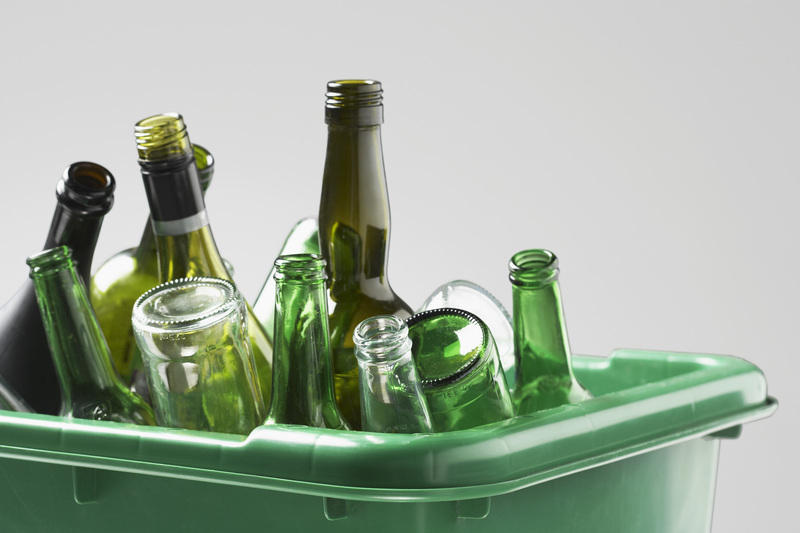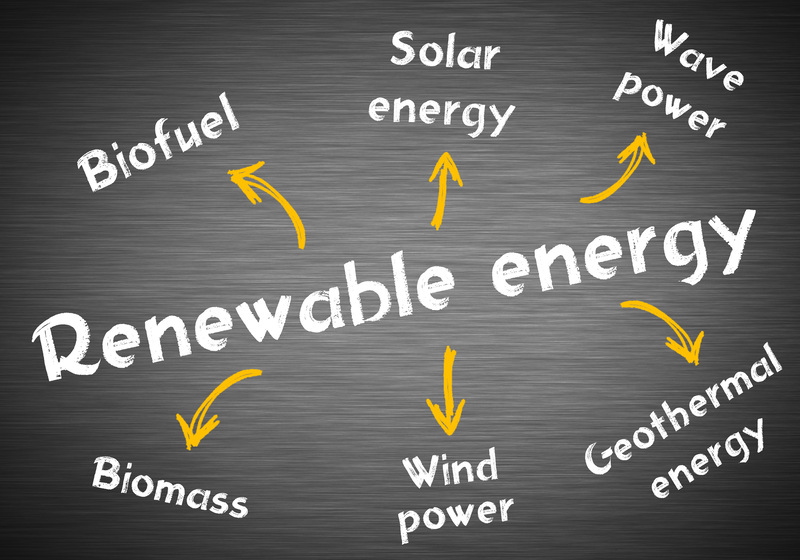The ABCs of Hazardous Waste: What to Recognize
Dealing with hazardous waste isn't just an environmental concern - it's a fundamental part of public health, workplace safety, and responsible living. Understanding the ABCs of hazardous waste equips individuals, businesses, and communities to handle, store, and dispose of these dangerous materials safely. In this comprehensive article, we'll explore every aspect of hazardous waste: from what it is and why it matters to regulatory frameworks, identification, and practical tips for recognition and management.
What Is Hazardous Waste?
Hazardous waste refers to any discarded material -- liquid, solid, or gaseous -- that poses substantial or potential threats to public health or the environment. Such waste is generated from various sectors, including industrial operations, healthcare, agriculture, households, and research laboratories. The key differentiator is that hazardous wastes contain properties that make them dangerous or potentially harmful.
Defining Characteristics
According to the Environmental Protection Agency (EPA) and similar regulatory bodies worldwide, hazardous waste displays at least one of the following characteristics:
- I - Ignitability: Waste that can easily catch fire, such as solvents and fuels.
- C - Corrosivity: Acids or bases capable of corroding metals, like battery acid or industrial cleaners.
- R - Reactivity: Unstable materials that can react violently, explode, or release toxic gases.
- T - Toxicity: Harmful when ingested, inhaled, or absorbed, such as heavy metals, pesticides, or certain pharmaceuticals.
In simple terms, if a waste product can burn, corrode, explode, or poison living organisms, it is considered hazardous.

The Significance of Recognizing Hazardous Waste
Why does it matter to properly recognize hazardous waste? The consequences of improper identification can be severe: health hazards for people and animals, environmental pollution, costly civil penalties, and even criminal liability under environmental laws.
- Health concerns: Exposure can lead to acute poisoning, chronic diseases, cancer, birth defects, and respiratory issues.
- Environmental impact: Groundwater and soil contamination, aquatic toxicity, and lasting ecosystem disruption.
- Legal compliance: Failure to follow hazardous waste disposal regulations may result in substantial penalties.
Types and Examples of Hazardous Waste
Hazardous waste spans a vast array of substances. Let's review key types of hazardous waste and their most common sources for better recognition:
1. Industrial Hazardous Waste
- Sludges from metal finishing, electroplating, and oil refineries
- Solvents, degreasers, paints, and ink residues
- Acidic or caustic process liquids
2. Household Hazardous Waste (HHW)
- Pesticides, herbicides, and insecticides
- Batteries (especially those containing lead, lithium, or mercury)
- Fluorescent light bulbs (mercury vapor)
- Cleaning products, drain openers, and oven cleaners
- Paints, thinners, varnishes, and adhesives
3. Medical and Biological Hazardous Waste
- Used needles and sharps (biohazards)
- Broken mercury thermometers
- Chemotherapeutic agents and pharmaceuticals
4. Electronic Waste (E-Waste)
- Televisions, computers, and mobile devices with heavy metals
- Old batteries from electronics
- Capacitors and circuit boards containing PCBs
5. Construction and Demolition Hazardous Waste
- Asbestos-containing materials from demolition
- Leftover paints, sealants, adhesives
- Pressure-treated wood
How to Identify Hazardous Waste
Recognition is the first and most vital step. Identifying hazardous waste involves diligent evaluation based on appearance, labeling, SDS (Safety Data Sheets), and regulatory definitions.
Physical Signs and Clues
- Labeling: Most hazardous substances are labeled with warning signs such as "DANGER", "TOXIC", "HAZARDOUS", or have hazard pictograms (flammable, corrosive, explosive).
- Appearance: Unusual colors, strong chemical odors, or visibly corroded containers suggest hazardous properties.
- Storage Location: Items kept separately in chemical closets, locked containers, or special areas are often hazardous.
- Resource Conservation and Recovery Act (RCRA) Codes: In the US, consult RCRA listings for specific waste streams designated as hazardous.
- Consult the SDS: Every chemical or compound used in workplaces comes with a Safety Data Sheet detailing its hazards, safe handling, and disposal requirements.
Questions to Ask When Evaluating Waste
- Does the waste cause burns to skin or materials?
- Is it prone to catching fire or exploding under normal conditions?
- Has it been used for industrial, laboratory, or maintenance activities?
- Does it contain heavy metals such as mercury, lead, or cadmium?
- Does it smell strongly or cause headaches, dizziness, or respiratory distress?
Common Misconceptions
- Not all dangerous waste is clearly marked. Some hazardous waste may appear ordinary, like everyday cleaners or batteries.
- Mixing hazardous waste with regular trash is illegal and dangerous. Even a small amount of hazardous material can contaminate an entire load of municipal waste.
The Legal Framework for Hazardous Waste
Understanding hazardous waste regulations is crucial for businesses and individuals alike. Regulations differ by country, but many are modeled on the US EPA and similar agencies' frameworks.
Key Laws and Regulations (US Example)
- Resource Conservation and Recovery Act (RCRA): Governs the generation, transport, treatment, storage, and disposal of hazardous waste.
- Comprehensive Environmental Response, Compensation, and Liability Act (CERCLA or Superfund): Directs the cleanup of hazardous waste sites.
- State and Local Laws: Many states enforce stricter rules and registration requirements.
International Regulations
- Basel Convention: Controls transboundary movements of hazardous wastes and their disposal, aiming to prevent the movement of hazardous waste from developed to less developed countries.
Generator Responsibilities
- Identify and properly classify all waste produced
- Correctly store waste in labeled containers
- Safely transport waste with proper documentation and certified carriers
- Use only authorized treatment or disposal facilities
- Maintain records and reports as required by law
Safe Handling and Proper Disposal
Once hazardous materials have been identified, proper management and disposal steps are essential to reduce risks.
Best Practices for Handling Hazardous Waste
- Wear Personal Protective Equipment (PPE): Gloves, goggles, masks, and other gear as required.
- Avoid Direct Contact: Never touch, inhale, or ingest hazardous materials.
- Don't Mix Incompatibles: Some chemicals can react dangerously if combined.
- Label and Secure Waste: Use appropriate containers and ensure they are sealed and labeled with the type of waste and hazard symbols.
- Keep Away from Heat or Spark Sources: Especially important for flammable or reactive wastes.
Disposal Methods
- Recycling: Many batteries, electronics, and certain solvents can be safely recycled through designated programs.
- Incineration: High-temperature burning in specialized hazardous waste incinerators to destroy toxins.
- Landfilling: Only in specially engineered facilities designed to contain hazardous waste.
- Chemical treatment: Neutralization or detoxification processes that make waste safer for disposal.
- Household Hazardous Waste (HHW) collection events: Many communities offer designated days for safe drop-off of household materials.
Consequences of Improper Disposal
The effects of carelessly discarding hazardous waste can be catastrophic. Some of the risks include:
- Contaminated water supplies, leading to public health emergencies
- Soil pollution, rendering land unusable
- Airborne toxins from open burning or volatilization
- Accidental fires and explosions in landfills or refuse trucks
- Legal and financial penalties for individuals and businesses
Real-World Examples of Hazardous Waste Recognition
- Old Paints and Solvents: Leftover cans in your garage may contain lead or heavy metals - bring to a hazardous waste collection site, not the trash.
- Batteries: Alkaline, lithium-ion, nickel-cadmium, or lead-acid - each requires special handling; leaking or corroded batteries are especially dangerous.
- Fluorescent Bulbs: These contain mercury vapor and must be recycled at designated facilities.
- Pesticides and Fertilizers: Old garden chemicals should never be poured down drains or onto the ground.
- Laundry and Cleaning Products: Industrial cleaners and spot removers often contain corrosives or toxins and require proper inspection before disposal.

Proactive Steps for Individuals and Businesses
Whether you're a homeowner, a small business operator, or an industrial manager, proactive recognition and planning can minimize the risks associated with hazardous waste.
1. Conduct Regular Audits
- Inspect storage areas for expired, unlabeled, or suspect containers.
- Check safety data sheets for every chemical in use.
2. Train Employees and Family Members
- Train everyone in your household or workplace about hazardous waste identification and emergency response
- Ensure new substances are properly documented and labeled at the point of purchase
3. Find Local Disposal Solutions
- Contact your municipality for hazardous waste drop-off centers
- Utilize manufacturer or retailer "take-back" programs for electronics and batteries
- Stay updated on HHW collection events in your community
Conclusion: Recognize and Act
The responsible management of hazardous waste starts with recognition. Whether at home, school, work, or in the community, knowing how to identify and safely handle hazardous materials protects people and the planet alike. From reading labels and consulting Safety Data Sheets to understanding regulatory responsibilities, every step plays a part in effective hazardous waste identification.
Being aware of the signs and symbols of hazardous waste, following best practices for storage and segregation, and choosing the proper disposal options are not just regulatory obligations - they are essential to a sustainable, safe future. When in doubt, consult local environmental agencies or a professional waste contractor to ensure compliance and environmental stewardship.
Stay informed. Stay safe. Recognize hazardous waste and do your part in creating a cleaner, healthier environment!